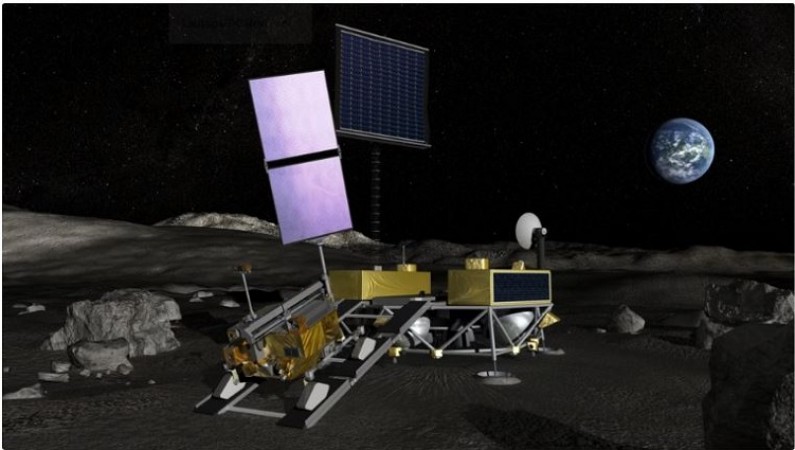
In the wake of the triumphant soft-landing of the Chandrayaan-3 lander on the lunar surface, the Indian Space Research Organisation (ISRO) has set its sights on propelling two groundbreaking lunar exploration endeavors.
Nilesh Desai, Director of the Space Applications Centre (SAC/ISRO) in Ahmedabad, disclosed that the forthcoming missions, LuPEx and Chandrayaan-4, aspire to achieve significant milestones. LuPEx aims to deploy substantial 350 kg landers on the uncharted 90-degree (or the darker side) of the moon, utilizing precision landing technology. Conversely, Chandrayaan-4 is geared toward a sample return mission.
During the 62nd Foundation Day celebration of the Indian Institute of Tropical Meteorology in Pune, Desai highlighted, "Following the enthusiasm sparked by the Chandrayaan-3 mission, we're now embarking on the joint Lunar Polar Exploration Mission. While Chandrayaan-3 ventured up to 70 degrees, LuPEx will push boundaries to 90 degrees, focusing on observing the moon's dark side. Our aim is to land a substantial rover weighing up to 350 kg. In comparison, Chandrayaan-3's rover weighed only 30 kg, so the lander in this mission will be significantly larger."
Discussing the Chandrayaan-4 Mission, Desai revealed, "After the success of Chandrayaan-3, Prime Minister Narendra Modi urged us to take on greater challenges. We anticipate encountering challenges with this new mission, but we aim to accomplish it within the next 5 to 10 years."
Desai underscored the utilization of technology demonstrated by the Japanese moon mission launched on September 7, which will aid in achieving precision landing. He emphasized, "We aim for an exceptionally challenging precise landing on the rim of a crater at a 90-degree angle, with a 350 kg rover exploring an area of 1 km x 1 km (Chandrayaan-3 explored 500 meters x 500 meters)."
He detailed the differences, explaining that while Chandrayaan-3 was designed for a single lunar day, the forthcoming mission intends to operate for seven lunar days, equivalent to nearly 100 Earth days. "These are the challenges with the new mission, and we are hopeful of achieving this within the next 5 to 10 years," Desai remarked.
Delving into the Chandrayaan-4 mission, he outlined, "Chandrayaan-4 is planned as a lunar sample return mission. In this mission, we will land on the moon's surface and return with samples. The landing process will resemble Chandrayaan-3, but the central module will return after docking with the orbiting module. Subsequently, it will separate close to Earth's atmosphere, and the re-entry module will return with soil and rock samples from the moon. It's an ambitious endeavor that we aim to accomplish in the next five to seven years."
Desai elaborated on the mission's logistics, stating, "This mission will require two launch vehicles, as four modules—Transfer module, Lander Module, Ascender Module, and Re-entry module—need to be launched. The Re-entry and Transfer modules will orbit the moon, while the Lander and Ascender modules descend. The Ascender Module will collect the sample, and we are currently working on various technologies to achieve this, utilizing ISRO's existing capabilities."
India's triumphant Chandrayaan-3 mission, which successfully landed on the moon's South Pole on August 23, marked a significant leap, making India the fourth country, following the US, China, and Russia, to achieve this historic feat. This milestone effectively concluded the disappointment stemming from the Chandrayaan-2 crash landing four years ago.